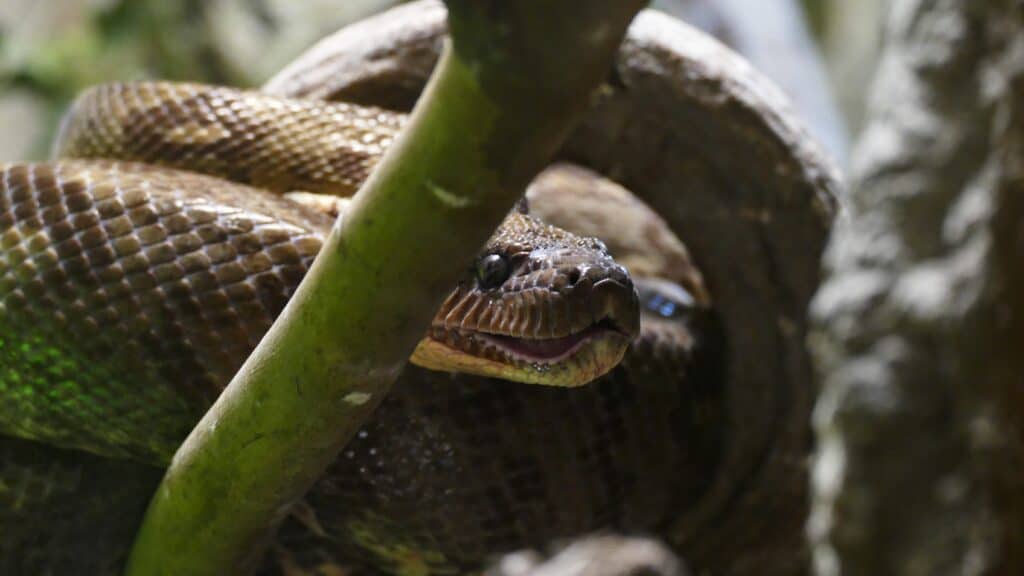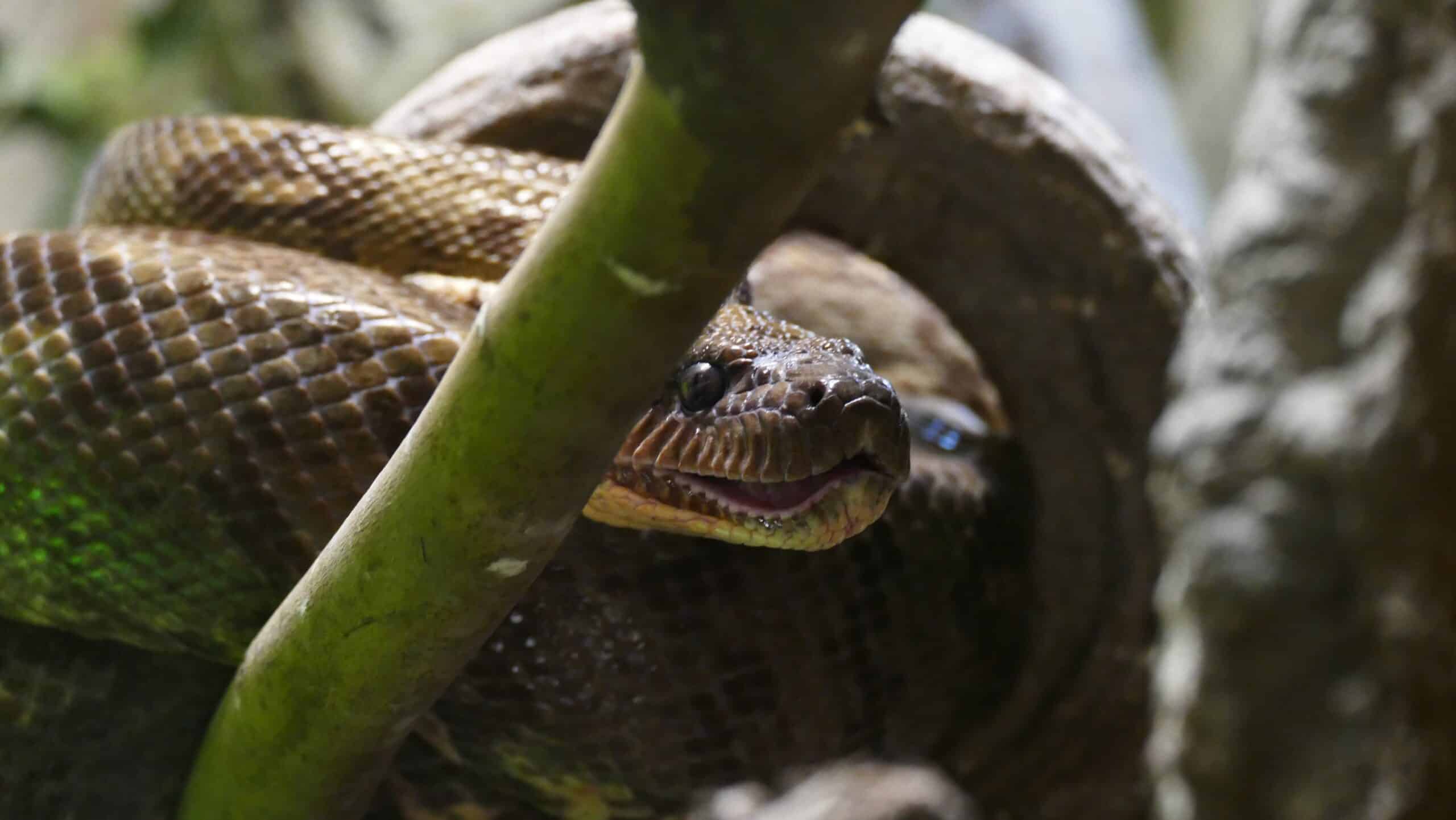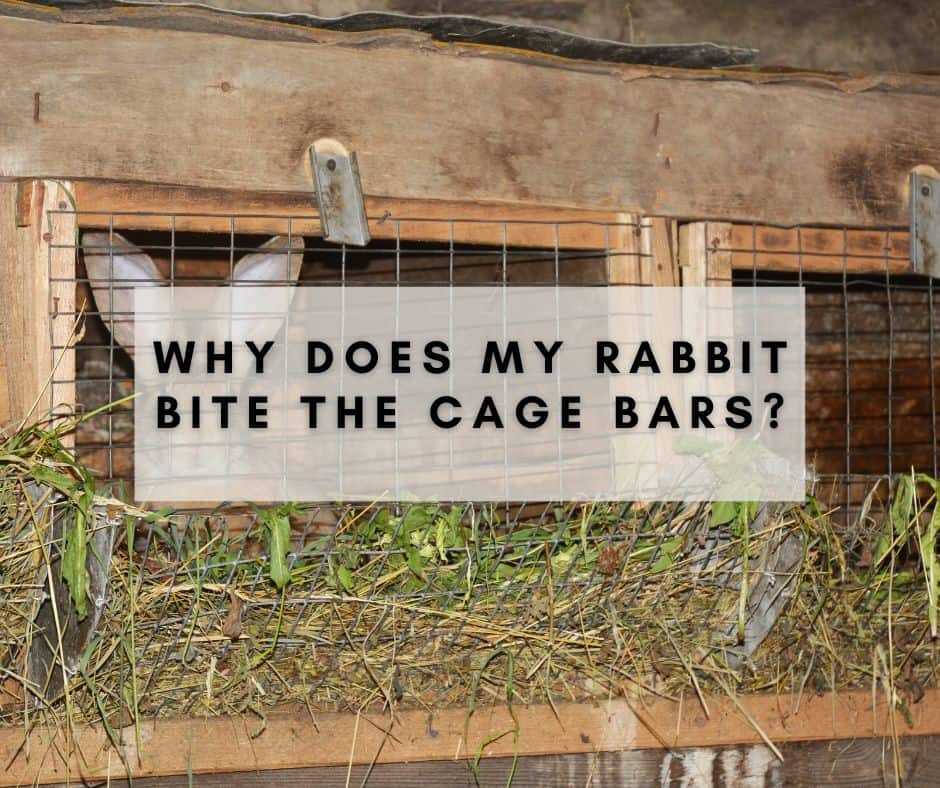
The other day I was feeling a little bit lazy and pretty much stayed on my couch the majority of the day. I was watching an old 90’s action flick which will remain unnamed, where a snake dropped down from the trees and gave the hero a very hard time.
As I run this blog, this got me curious. Can a snake actually climb a tree? It turns out, yes they can! To many people’s frustration, that can be bad news. I would encourage you to not be alarmed, however. Let’s discuss why below.
As snakes do not have limbs or hands they can climb with, they need to propel themselves upwards in some sense. Just thinking about it, a snake with arms and hands would be a pretty scary looking thing!
The snake’s bodies are thin and long, and they wrap around the tree branches and trunks in different orientations making climbing possible. The motion they are using is called concertina locomotion, and it works but a push / pull motion. One part of the snake pushes, and one part of the snake pulls. This is better explained through video, see below:
The technique the snake uses really resembles the technique we humans use when we climb a tree. It’s a slow and tiresome process, so you don’t need to be afraid of the snake’s speed while climbing upwards. You probably have tried this in PE-class. And at least from my experience, this is not an easy task to pull off.
There is another technique for the smaller snakes to climb a tree. They climb the tree vertically, using their gastrosteges, which is a form of scales that sits on the downside of the snake. The friction those scales provide makes climbing possible. The snake will repeat this process to climb higher and higher. Notice in the video below how the snake takes a grip then moves another part of the body and repeats the process to climb upwards.
Can all snakes climb trees?
All trees are different. There are tree trunks that are super smooth, and there are tree trunks that are pretty rough. Depending on what tree the snake is trying to climb determines its success rate.
If it’s a rough tree the chances are that the snake will successfully climb that tree. When the tree trunk is rough, the snake has a good chance of gripping due to the friction.
However, if the tree is a smooth surface it will get trickier. As we looked at the video above, we saw that the bigger snake had no problem climbing a pretty smooth looking trunk. This, however, takes a lot of time since it needs to grab a hold of the trunk, and then try to propel itself higher using the motion of concertina locomotion. If this were to be a smaller snake on this flat surface, the chances of success to climb that tree would be pretty slim.
There are reports of rattlesnakes that have been seen climbing trees from time to time. A snake may climb a tree to escape a predator, or it may get scared of your walking and taking the easy way up to avoid greeting you. There are known cases where for example blacktails have been seen climbing a tree to possibly hunt a bird or maybe a squirrel.
How to keep snakes from climbing your trees
I get it. Snakes are bad for your backyard and are considered bad news. The chances of you seeing a snake in your backyard depending on a variety of factors, for example, your geographic location, your landscape, humidity, water ponds, lakes, and your garden design, etc. There are proactive measures you can consider to set yourself off in a possible way to create a non-snake friendly environment in your backyard.
- Do not water your lawn. If you do water your lawn you may attract slugs, snails, worms, and frogs. What do those guys have in common? Snake-food.
- If you have a bird feeder, consider moving it to the outside of your backyard. As birds are quite messy eaters, they will scatter seeds all around them, and that could attract rodents which also will attract snakes.
- Feed your pets inside. If you feed your pets on your lawn, chances are that your pet may miss a few bits here and there. Which also will cause rodents or other animals to enter your backyard.
- Keep your lawn mowed short. As you may know snakes like it in tall grassy areas. If you keep your lawn short, you will signal to the snakes that this place isn’t as good as hiding from predators.
- Garden design. If you have designed your garden with ponds or waterfalls, you may start seeing snakes in your backyard. This is more common in locations that are quite hot. Consider not having a pond or waterfall to fend of the snakes.
- Rocky landscapes. If you have a rocky landscape in your garden chances are that you may start seeing snakes as well. Rocky pathways provide good cover for predators for the snakes, making rocky areas a perfect hiding place.
- Fencing. If all else fails, consider putting up a snake specific fencing around your backyard. There are organizations that can help you out finding the right fence for your snake problem.
Summary
Yes, snakes can climb trees. However, it depends on what type of tree, and how big the snake is.
Snakes do not climb trees as a national sport. They do it because to get out of danger, or for feeding. They are rarely spotted just hanging out waiting to jump on any random human’s shoulder as you pass them. Remember as your teachers used to say, they are probably more afraid of you than you are of them.
There have been discussions about snakes even being photoshopped into trees, being that this is so rarely seen in the wild. This gives me at least some peace of mind when I’m planning my mid-day walk.
Have you ever seen a snake climb a tree and took a picture? If you want your picture featured on this page, drop me an e-mail at rikard@oursmallpets.com.




